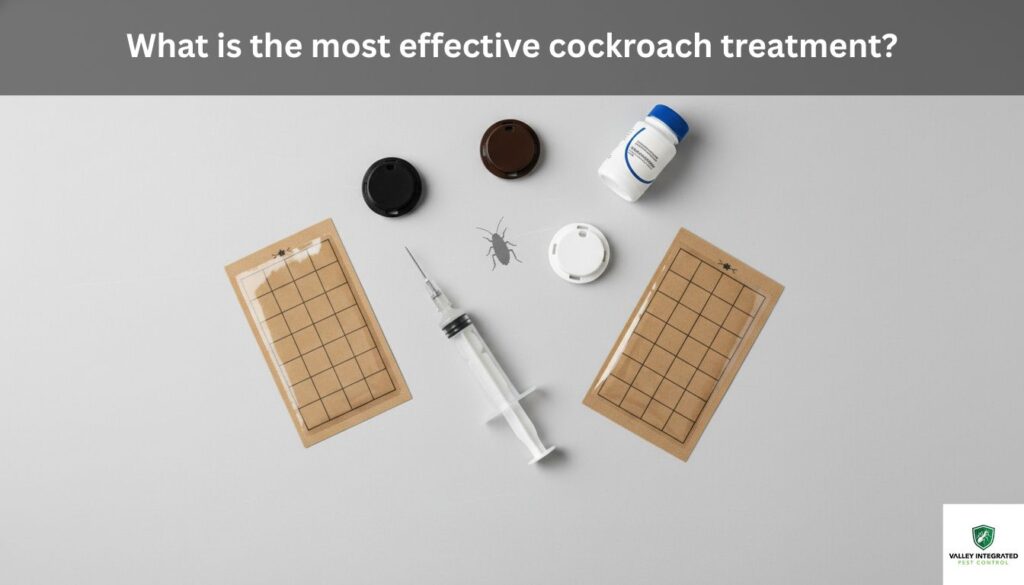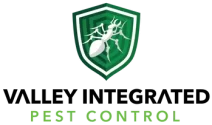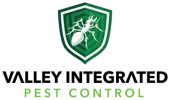The chilling sight of a cockroach scuttling across your kitchen floor in the dead of night is a universal experience of disgust and frustration. Your immediate reaction is likely to grab the nearest can of aerosol spray, unleashing a chemical assault. For a moment, you feel victorious. But a few days later, you see another. And then another. You’ve killed a few soldiers, but you’ve done nothing to stop the war. This cycle of failure is precisely why common cockroach control methods are destined to disappoint. The truth is, there is no single “best” product or magic spray that will solve your problem for good.
The most effective cockroach treatment isn’t a product at all—it’s a process. A strategic, multi-layered Integrated Pest Management (IPM) approach that is customized to the specific cockroach species infesting your home. This is the critical step where most DIY efforts fail and where professional control begins. Thinking all roaches are the same is like treating every illness with aspirin; it ignores the root cause and guarantees the problem will return, often worse than before.

This guide will elevate your understanding from a frustrated homeowner to a strategic commander in the battle against these resilient pests. We will dismantle the one-size-fits-all myth and arm you with the knowledge professionals use. You will learn:
- Why identifying your enemy—distinguishing between an indoor-breeding German cockroach and an outdoor-invading American cockroach—is the non-negotiable first step to victory.
- The Pro’s Layered Attack Plan, moving beyond simple sprays to a combined strategy of sanitation, exclusion, advanced baits, and the secret weapon used to collapse entire colonies.
- The #1 critical DIY mistake that renders your most powerful tools completely useless and actually sabotages your own efforts.
- How Insect Growth Regulators (IGRs) work to sterilize the roach population, breaking the reproductive cycle for true, long-lasting cockroach control.
Prepare to rethink everything you thought you knew about getting rid of roaches. It’s time to stop swatting and start strategizing for a permanent solution.
Know Your Enemy: Why Cockroach Identification is the Most Critical First Step
Before you purchase a single bait, trap, or spray, you must answer one question: What species of cockroach am I dealing with? Answering this correctly dictates your entire strategy. Using a treatment designed for a large, outdoor-invading roach on a small, indoor-breeding species is a recipe for failure. Their biology, behavior, and harborage preferences are vastly different, demanding unique tactical approaches.
The Indoor Breeder: The German Cockroach (Blattella germanica)
If you have a persistent, hard-to-eliminate roach problem inside your home, especially in the kitchen or bathroom, you are almost certainly dealing with the German cockroach. This species is the undisputed king of indoor pests and the primary target for most professional-grade cockroach killer products.
- Appearance: The German roach is small, typically 1/2 to 5/8 inch long. It is light brown or tan with two distinct, parallel dark stripes running down its back, just behind the head.
- Behavior & Habitat: These roaches are prolific breeders. A single female can produce an egg case (ootheca) containing 30-40 eggs, and she can produce several cases in her lifetime. They thrive in warm, humid environments with easy access to food and water. This makes kitchens and bathrooms prime real estate. Key hiding spots include:
- Under and behind refrigerators, dishwashers, and stoves. A common and easily accessible harborage area for cockroaches in an apartment kitchen is the refrigerator motor compartment.
- Inside cabinets and pantries, especially in the upper corners.
- Within cracks and crevices in walls, baseboards, and around pipes.
- Inside small appliances like toasters, microwaves, and coffee makers.
- How They Arrive: A crucial point to understand is that German cockroaches rarely invade from the outside. According to pest expert Trenton Frazer, cockroaches typically don’t sneak in from outside but instead hitch a ride in grocery bags, furniture, or boxes, and then stay for the available food. They are professional hitchhikers.
- Signs of Infestation: Look for “cockroach infestation signs in kitchen” areas. You’ll find small, dark, pepper-like specks of cockroach droppings on countertops, in drawers, or on top of cabinets. A significant infestation will also produce a distinct, musty or oily odor.
- Treatment Focus: The strategy for “how to get rid of german cockroaches for good” revolves around deep sanitation, the precise application of gel baits, and the use of Insect Growth Regulators (IGRs) to halt their explosive reproductive cycle. Perimeter sprays are largely ineffective against this indoor breeder.
The Outdoor Invaders: American & Oriental Cockroaches
These species are often called “peridomestic” roaches because they primarily live outdoors but will venture inside in search of food, water, or shelter from extreme weather. If you see a very large roach, especially in a basement, garage, or on the ground floor, it’s likely one of these invaders.
American Cockroach (Periplaneta americana)
- Appearance: This is the largest house-infesting roach, reaching lengths of 1.5 to 2 inches. They are reddish-brown with a yellowish figure-8 pattern on the back of their head. They have fully developed wings and are capable of flying short distances.
- Behavior & Habitat: The American cockroach loves dark, damp, and warm environments. They are commonly found in sewers, steam tunnels, basements, crawl spaces, and around drains and pipes. They enter buildings from the outside through gaps under doors, through foundation cracks, or via sewer connections.
- Treatment Focus: The “american cockroach vs german cockroach treatment” difference is stark. For the American roach, the focus is on exclusion—sealing all potential entry points—and applying the “best outdoor cockroach treatment,” such as granular baits and non-repellent residual sprays around the foundation of your home.
Oriental Cockroach (Blatta orientalis)
- Appearance: Often called “water bugs” or “black beetles,” these roaches are about 1 to 1.25 inches long with a shiny, dark brown or black body. The females have small, rudimentary wing pads, while males have wings that cover about three-quarters of their abdomen; neither can fly.
- Behavior & Habitat: Oriental cockroaches thrive in very damp, cool places. Think floor drains, sump pumps, crawl spaces, and areas with water leaks. They are very common in basements and cellars and feed on decaying organic matter.
- Treatment Focus: “Oriental cockroach extermination” is similar to that for American cockroaches. It requires aggressive moisture control (fixing leaks, using dehumidifiers), cleaning out gutters and decaying leaf litter around the foundation, and creating a strong perimeter defense with baits and sprays.
Quick Identification Guide
| Species | Size | Color | Key Behavior | Primary Location |
|---|---|---|---|---|
| German Cockroach | Small (~0.5″) | Tan with 2 dark stripes | Indoor breeder, prolific, hitchhiker | Kitchens, bathrooms (warm, humid areas) |
| American Cockroach | Large (~1.5-2″) | Reddish-brown | Outdoor invader, can fly, seeks water | Basements, sewers, drains, crawl spaces |
| Oriental Cockroach | Medium (~1″) | Shiny black/dark brown | Outdoor invader, loves cool, damp areas | Floor drains, basements, mulch beds |
Understanding “cockroach droppings identification” can also help. German roach droppings are small and look like coffee grounds or black pepper. American and Oriental roach droppings are larger, cylindrical, and may have ridges on the sides, sometimes mistaken for mouse droppings.
Related: Identifying German vs American cockroaches
The Pro’s Playbook: Deconstructing the Integrated Pest Management (IPM) Pyramid for Cockroaches
Integrated Pest Management, or IPM, is the gold standard for effective, long-term pest control. It’s not a single action but a sustainable, science-based decision-making process that uses multiple tactics to control pests. For cockroaches, this means creating an environment where they simply cannot survive or thrive. Think of it as a pyramid: you must build a strong foundation before the more targeted methods at the top can be effective. We will focus on the four layers crucial for “integrated pest management for cockroaches.”
Layer 1: Sanitation & Source Reduction (Removing the Welcome Mat)
This is the absolute, non-negotiable foundation of any successful cockroach control program. You cannot bait or spray your way out of a sanitation problem. If roaches have unlimited access to food, water, and shelter, they will breed faster than you can kill them. To effectively get rid of cockroaches, you must take away their food, hiding places, and water sources.
- Deep Clean the Kitchen: This goes far beyond wiping down counters. Pull out your refrigerator, stove, and dishwasher. Clean the floors, walls, and sides of the appliances, removing all built-up grease and food debris. These are primary “cockroach infestation signs in kitchen” areas.
- Eliminate All Food Sources: Store all food, including pet food and dry goods like cereal and flour, in airtight glass or hard plastic containers. Never leave dirty dishes in the sink overnight. Wipe up crumbs and spills immediately.
- Cut Off the Water Supply: Cockroaches can survive for a month without food, but only a week without water. Fix leaky faucets and pipes immediately. Dry your sink and bathtub completely every night. Place a stopper in drains. Don’t overwater houseplants. This is vital for “getting rid of cockroaches in the bathroom.”
- Vigilant Waste Management: Use a garbage can with a tight-fitting lid. Take out the trash every single night, and keep the exterior of the can clean. If you have recycling bins, rinse them thoroughly to remove food residue.
This addresses the common question, “why do I have roaches if my house is clean?” Your definition of clean might not be “pest-proof” clean. A few crumbs under the toaster or a small leak behind the toilet is a five-star resort for a cockroach.
Layer 2: Exclusion (Fortifying Your Home)
Once you’ve removed their resources, the next step is to block their movement. Exclusion is the process of physically preventing roaches from entering your home and moving between rooms. Experts advise that a crucial step in cockroach control is to block all entry points by thoroughly inspecting a home’s interior and exterior and sealing any cracks or holes.
- Seal Interior Gaps: Use caulk to seal cracks and crevices along baseboards, in corners, around pipes under sinks, and behind cabinets. Pay close attention to the kitchen and bathrooms.
- Address Wall Voids: For roaches traveling inside walls, you’ll need a more advanced approach. This is where you might need to drill small holes and use insecticidal dusts, which we’ll cover in the next section. This is the key to “how to get rid of roaches in walls.”
- Fortify the Exterior: For larger roaches like the American and Oriental species, this is paramount. Seal cracks in the foundation, install weather stripping on doors and windows, and cover vents with fine mesh screens. This process of “sealing cockroach entry points” creates a physical barrier.
- Apartment Dwellers: Exclusion is especially critical in multi-unit buildings. In apartments and multi-family dwellings, cockroaches use the building’s infrastructure like utility lines and natural gaps as a ‘superhighway’ to travel between units. Caulk around all shared plumbing and electrical conduits. This is the best strategy for “stopping roaches from neighbors.”
Layer 3: Chemical Controls (The Strategic Attack)
With the foundation of sanitation and exclusion in place, you can now deploy chemical controls effectively. This is not about indiscriminately spraying chemicals. It’s about using the right products in the right places to achieve maximum impact with minimal exposure. This is “what professional exterminators use for roaches” – a combination of smart, targeted tools.
The Smart Bomb: Non-Repellent Baits (Gels & Stations)
This is arguably the most powerful tool for eliminating an entire German cockroach colony. High-quality roach baits are not instant killers. They are slow-acting, non-repellent poisons mixed with an attractive food source. Roaches consume the bait, return to their hidden nests (“harborages”), and excrete or die. Other roaches then consume their poisoned feces or cannibalize their carcasses, spreading the poison throughout the colony in a domino effect that kills roaches you never even see.
- How They Work: Active ingredients like Fipronil or Indoxacarb are undetectable to roaches. This is the main difference in the “roach bait vs spray” debate; most sprays are repellent and just scatter them.
- Leading Products: An “Advion cockroach gel bait review” or search for a “fipronil gel bait for roaches” or “indoxacarb cockroach treatment” will show you the top professional-grade choices. These are significantly more effective than most big-box store brands like Combat or Terro.
- How to Apply Cockroach Gel Like a Pro: The key is to apply many small, pea-sized dots of bait rather than long, thick lines. Place them every 12-18 inches in areas where roaches travel and hide. Do not place bait in open areas or on countertops.
- Effective Placement (“where to place roach bait stations”):
- Inside cabinet corners and door hinges.
- Where pipes and wires enter walls (under sinks, behind the toilet).
- Behind and alongside appliances (refrigerator, microwave, dishwasher).
- In cracks and crevices along baseboards.
- Bait Stations: For a “child-safe roach killer” approach or for “getting rid of roaches when you have pets,” bait stations are a better choice than open gel placements. They enclose the bait in a plastic, tamper-resistant container. The “combat roach killing bait vs gel” debate often comes down to safety and placement; gels are more versatile for cracks, while stations are better for more open areas like under a sink.
The Secret Weapon: Insect Growth Regulators (IGRs)
This is the tool that separates amateurs from professionals and provides true, “long-lasting cockroach control.” IGRs are not a traditional poison; they are a form of birth control for roaches. They mimic an insect’s natural hormones, and when exposed, they disrupt the roach life cycle. They prevent nymphs from developing into reproductive adults and cause adult females to produce sterile or non-viable egg cases. This effectively breaks the reproductive cycle and collapses the population over time.
- Why They Are Essential: While baits kill the current generation, IGRs ensure there won’t be a next one. This is the closest you can get to a “permanent solution for cockroaches.”
- Top IGRs: Look for products containing active ingredients like (S)-Hydroprene (Gentrol) or Pyriproxyfen. They are available in aerosol cans, liquid concentrates, and point-source disks. The “best IGR for german roaches” is often Gentrol, as it is very stable and effective.
- Application: IGRs are typically sprayed in the same general areas as baits—in cracks, crevices, and under appliances. They are used in tandem with baits, not as a standalone solution.
The Void Treatment: Insecticidal Dusts
For those hard-to-reach areas like wall voids, behind electrical faceplates, and deep under cabinets, insecticidal dusts are the perfect long-term solution. When kept dry, they can remain effective for months or even years.
- Boric Acid: The “boric acid for roaches effectiveness” is well-documented. It’s a stomach poison that roaches ingest while grooming themselves after walking through a light application. It is very effective but must be applied as a very fine, barely visible layer. Piles of powder will be avoided.
- Diatomaceous Earth (DE): “Diatomaceous earth for cockroach control” works physically, not chemically. DE is the fossilized remains of tiny aquatic organisms. To an insect, it’s like walking through broken glass. It scratches their exoskeleton, causing them to dehydrate and die. It’s a great “non-toxic cockroach treatment” option, but be sure to use food-grade DE.
- Application: Use a bulb or bellows duster for a targeted, light application into voids and cracks. This is the professional way to “get rid of roaches in walls.”
Critical DIY Mistakes That Sabotage Your Entire Roach Control Effort
You can invest in the “best over the counter roach killer” products, but if you make these common mistakes, you’ll be throwing your money away and prolonging the infestation.
The #1 Mistake: Using Repellent Sprays (like Raid) Near Your Baits
This is the single most destructive error in DIY roach control. Products like Raid, many Ortho sprays, and anything with a strong chemical smell are often pyrethroid-based *repellents*. They are designed to kill on contact and create a chemical barrier that roaches will actively avoid. If you spray this anywhere near your expensive, non-repellent gel bait, you have just made your bait stations and gel placements invisible and completely useless to the roaches. You are essentially hiding the food you want them to eat. Stick to one strategy: if you are using baits (the superior choice for German roaches), do not use any repellent sprays in the same areas.
Over-application of Gels and Dusts
More is not better. Cockroaches are wary creatures. A giant glob of gel bait or a thick pile of boric acid powder looks unnatural and will be avoided. This is known as bait aversion. The professional technique is to apply many small, strategically placed dots of gel and a fine, almost invisible layer of dust. This increases the chances that roaches will encounter and consume/contact the product during their natural foraging.
Ignoring the “Hitchhiker” Threat
Many homeowners with German roach problems focus entirely on their own home’s cleanliness, failing to realize the pests were imported. Diligently inspect all incoming items: grocery bags, cardboard boxes from deliveries, second-hand furniture, and even items from a neighbor’s home. A single pregnant female or egg case brought in on a box can start a full-blown infestation.
Relying on Ineffective “Natural” or Gimmick Solutions
The internet is full of quick-fix promises that rarely deliver meaningful results for an established infestation.
- Ultrasonic Pest Repellers: “Do ultrasonic pest repellers work on roaches?” The overwhelming scientific consensus and studies by the FTC and universities have shown they do not. Roaches quickly acclimate to the sound and ignore them. They are a complete waste of money.
- Essential Oils and Scents: “What smells do roaches hate?” They may dislike strong scents like peppermint oil, tea tree oil, or bay leaves. These can act as very mild, temporary repellents. However, they will not kill roaches or eliminate an infestation. They are a fragrant band-aid on a serious problem.
- DIY Baits: A “homemade roach killer with baking soda” or a “DIY cockroach bait recipe” using sugar and boric acid can have some minor effect. However, they are far less attractive and potent than professionally formulated baits, which have undergone years of research to perfect their attractiveness and killing power. For a serious problem, stick with the professional-grade products.
Frequently Asked Questions About Eliminating Cockroaches
What is the most effective thing to get rid of roaches?
The single most effective thing is not a product, but a strategy: a comprehensive Integrated Pest Management (IPM) plan tailored to the specific roach species. For the common German cockroach, this means a combination of meticulous sanitation, sealing entry points, the application of high-quality non-repellent gel baits, and the use of an Insect Growth Regulator (IGR) to stop their reproductive cycle.
What is the number one roach killer?
There isn’t a single “number one” product for all situations. However, for German cockroach infestations, most professionals would agree that the combination of a modern, non-repellent gel bait (like those containing Fipronil or Indoxacarb, such as Advion) and an IGR (like Gentrol) is the most powerful and effective killing system. This system targets the entire colony, not just individual roaches.
What kills roaches 100% and provides a permanent solution?
Achieving 100% elimination is possible, but a “permanent solution” requires ongoing vigilance. No chemical treatment lasts forever. The process that kills 100% of an existing infestation is a thorough IPM program. The permanency comes from maintaining the foundational layers of that program: excellent sanitation and diligent exclusion (keeping cracks sealed). You must remove the conditions that allowed the roaches to thrive in the first place. This answers the question “can you ever get rid of roaches completely?”—yes, but it requires a change in habits, not just a one-time treatment.
Why shouldn’t you squish cockroaches?
There are two primary reasons. First, squishing a roach can release and aerosolize allergens from its body, which can trigger asthma and allergy attacks in sensitive individuals. Second, there’s a risk, particularly with a female German cockroach, that squishing her could cause her to drop her ootheca (egg case). While the physical act of squishing would likely damage the case, if it survives intact, you’ve just turned one problem into 30-40 new ones. It’s always better to kill them with a targeted bait or a piece of paper towel and flush them.
How long does it take for roach bait to work?
You should not expect instant results. In fact, you may see a temporary increase in roach activity for the first few days as the bait attracts them out of hiding. You should see a significant reduction in the population within one to two weeks. For a heavy infestation, complete elimination can take several weeks to a few months as the bait and IGR work their way through the entire population and all life cycles.
What should I do after a roach treatment?
After a professional or a thorough DIY treatment, the most important thing is not to clean away the products. Avoid wiping down baseboards or cleaning inside cabinets where bait or a non-repellent spray has been applied. Maintain your sanitation efforts to eliminate competing food sources. Monitor the situation using sticky traps (“most effective roach traps” for monitoring) to gauge the decline in population. And continue to look for and seal any new cracks or gaps.
When to Call a Professional Exterminator
Related: Can Cockroaches Trigger Allergies?
While a dedicated DIY approach using professional-grade products can solve many minor to moderate infestations, there are times when calling in an expert is the smartest, safest, and ultimately most cost-effective choice.
- You see roaches during the day. Cockroaches are nocturnal. Seeing them in the daytime is a classic sign of a very heavy infestation, meaning their hiding spots are so overcrowded they are being forced out in the open.
- The infestation is in multiple rooms. If you’re seeing roaches in the kitchen, bathroom, and bedrooms, it suggests a large, well-established population that will be very difficult to control without professional equipment and expertise.
- Your DIY efforts have failed. If you’ve diligently applied the IPM principles for 4-6 weeks and are still seeing significant roach activity, it’s time to call for help. A professional can identify what might have been missed.
- You live in an apartment complex. A “cockroach control for apartments” situation is complex. The infestation may be originating from a neighboring unit, and a building-wide treatment plan may be necessary.
Professionals have access to a wider range of “commercial grade roach spray” and other “professional grade cockroach killer” products that are not available to the public. They also have the experience to quickly identify the species, locate hard-to-find nests (“how to find a cockroach nest”), and implement a comprehensive treatment plan safely and effectively. While the “cost of professional roach extermination” can seem high initially, it can save you money in the long run on failed DIY products and give you invaluable peace of mind.
Winning the battle against cockroaches requires you to move beyond the simplistic mindset of “spray and pray.” It demands a strategic, intelligent, and persistent approach. By embracing the principles of Integrated Pest Management—correctly identifying your enemy, building a strong foundation of sanitation and exclusion, and then strategically deploying advanced tools like non-repellent baits and IGRs—you can do more than just kill a few roaches. You can dismantle their entire ecosystem within your home and reclaim your space for good.






